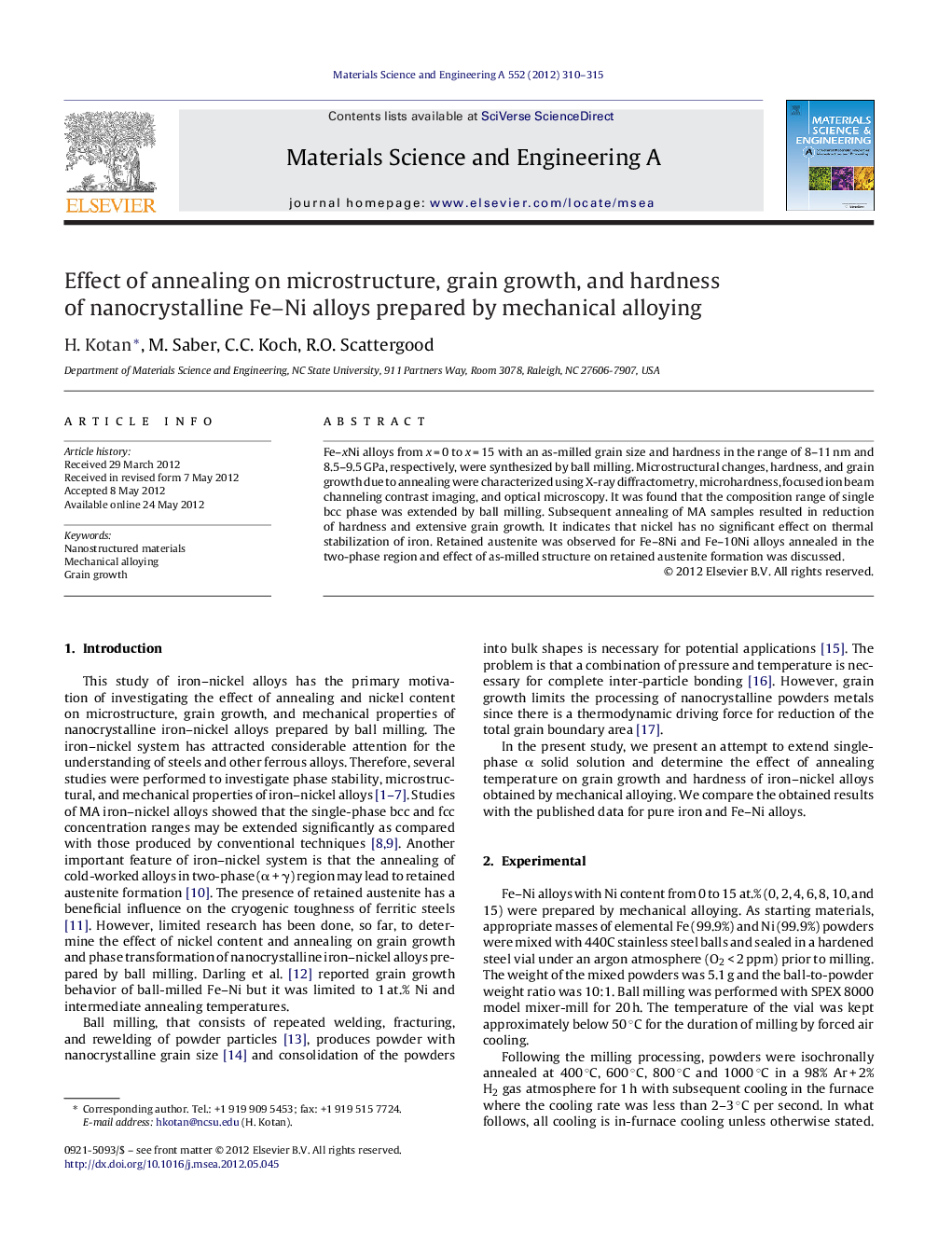| Article ID | Journal | Published Year | Pages | File Type |
|---|---|---|---|---|
| 1576979 | Materials Science and Engineering: A | 2012 | 6 Pages |
Fe–xNi alloys from x = 0 to x = 15 with an as-milled grain size and hardness in the range of 8–11 nm and 8.5–9.5 GPa, respectively, were synthesized by ball milling. Microstructural changes, hardness, and grain growth due to annealing were characterized using X-ray diffractometry, microhardness, focused ion beam channeling contrast imaging, and optical microscopy. It was found that the composition range of single bcc phase was extended by ball milling. Subsequent annealing of MA samples resulted in reduction of hardness and extensive grain growth. It indicates that nickel has no significant effect on thermal stabilization of iron. Retained austenite was observed for Fe–8Ni and Fe–10Ni alloys annealed in the two-phase region and effect of as-milled structure on retained austenite formation was discussed.
► Iron–nickel powders were hardened to 9.5 GPa by the mechanism of grain refinement strengthening using ball-milling. ► We annealed the prepared powders and observed reduced hardness and extensive grain growth above 500 °C. ► The Vickers hardness as a function of the grain size was found to exhibit a Hall–Petch slope. ► Retained austenite was observed for Fe–8Ni and Fe–10Ni alloys annealed in the two-phase region. ► As-milled microstructure plays an important role on the formation of austenite in the two-phase region.
